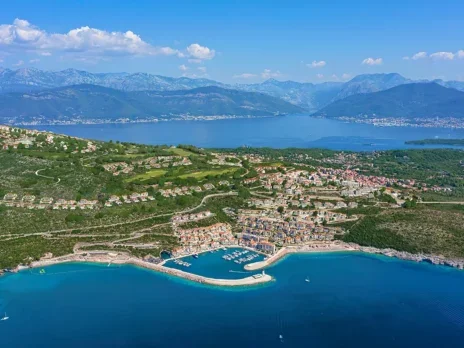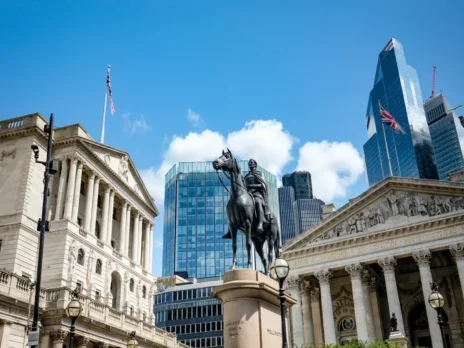
Dear Prime Minister,
With the imminent publication of the revised National Planning Policy Framework, we are writing to urge protection in the new planning system for heritage and countryside that not only contributes so much to our economy, but is also what makes this country unique.
Ever since the publication of the government’s new draft National Planning Policy Framework (NPPF) in July, Spear’s has been at the forefront of this critical national debate. A month ago, after meeting with planning minister the Rt Hon Greg Clark at the House of Commons, we submitted a 60-page document to the DCLG (‘Heritage and the NPPF’) that highlighted our concerns about watering down heritage and historic landscape protection in the planning system.
Our ‘Save Britain’s Historic Landscape’ campaign has consistently argued over the last six months that there needs to be closer regard in the revised NPPF to protecting Britain’s unique ‘heritage assets’ – including the settings of historic buildings – that bring in tourism, promote local jobs and directly contribute to sustainable economic growth by being open to visitors. The UK heritage tourism industry brings in over £12.1 billion a year to the economy and is growing at 2.6 per cent a year, more than manufacturing.
We welcome the fact that you have personally travelled to both New York and Davos to promote ‘heritage’ and the ‘countryside’ as crucial planks of the government’s £39 million ‘Britain Is GREAT’ campaign, with the aim of getting the message out about what makes Britain so special for foreign investment and tourists, not to mention those that work and live here. This campaign rightly shows how Britain’s heritage can be used to generate ‘long-term’ growth and kick-start the economy.
Yet, if that is what the government sincerely believes, then surely the government should be safeguarding heritage and our countryside in the NPPF, not undermining it?
Our submission to Greg Clark contained examples of several deeply worrying examples of Government planning inspectors recently over-riding the wishes and feelings of local communities, making a mockery of the notion of Localism as they interpreted the new NPPF guidelines, with its ‘presumption in favour of development’. The first case we highlighted was back in October, when a government inspector interpreted the new planning guidelines to allow a housing development within 500 metres of Grade I Great Coxwell Barn in Oxfordshire, one of the most important 14th-century buildings in the country which William Morris described as ‘unapproachable in dignity’.
Since then, every month has seen more Planning Inspector decisions that greatly harm heritage and our historic countryside. Only in the last week, when you were in Washington promoting Britain in America, a Planning Inspector overruled both a local council and local community feeling to give the green light to the development of four large wind turbines, each measuring 126.5 metres, near to the Grade 1 Lyveden New Bield in Northamptonshire, one of the National Trust’s most iconic heritage sites, which the Trust compares to Hampton Court. In his decision, the Planning Inspector described the heritage site as ‘probably the finest surviving example of an Elizabethan garden with a cultural value of national if not international significance.’
Despite this he concluded that greater importance should be placed on meeting the regional and national targets for renewable energy rather than protecting the historic setting of such an important heritage site. Fiona Reynolds, Director-General at the National Trust, said: ‘This decision is a landmark case which undermines the protection of our heritage sites. It provides a clear indication that our cultural heritage is at great risk from inappropriately sited wind turbines and wind farms. If the impacts here are not such to amount to substantial harm on our nation’s heritage it is difficult to conceive where they would be.’
It was also announced last week that a new giant wind farm is threatening the historic setting of two much loved Elizabethan landmarks in Derbyshire, Hardwick Hall and Bolsover Castle. In December, an inspector upheld an appeal by German energy giant E.ON which will allow a wind farm to desecrate the famous battle site of Naseby — the second most important battle in English history. A few days later another government inspector allowed another industrial wind farm to tower over Ashby St Ledgers Manor in Northamptonshire, the famous house where the Gunpowder Plot was schemed.
Around the country, the story is becoming the same, with our heritage being increasingly marginalized by developers and planning inspectors, who cite Whitehall pressure to reach EU driven renewable energy targets – some 32,000 turbines by 2020.
We began our campaign in early August, before The Telegraph began their hands Off Our Land campaign, by highlighting the tiny village of Winwick in Northamptonshire — population 75 — which is threatened with an invasion of wind turbines that will ruin the historic setting around the 15th-century manor, which was once owned by Sir Thomas Malory. Whilst 100 per cent of the community voted in the village parish hall against the development, the new Localism Bill gives little or no opportunity for locals to fight and defeat such unwanted planning applications on a level or democratic playing field.
If true Localism is to prevail, this needs to be changed in the new NPPF. Spear’s is deeply worried about this contradiction. On the one hand, the government is claiming to protect heritage, culture and tourism, while also championing a new planning system, on-shore wind and Localism agenda that trumps all other environmental considerations – including heritage and the Great British Countryside.
It was precisely because of these concerns that a group of over 100 Tory MPs, led by Chris Heaton-Harris MP, wrote to you on 30th January expressing their concerns over the government’s support for subsidies for on-shore wind energy funded on consumer energy bills at a time when so many people are struggling to pay for rising energy costs. This was soon followed by another letter to The Daily Telegraph signed by thirty eminent academics and public figures who shared the same views as the Tory MPs.
Our signatories would also like to express the same concerns. As we have argued from our first campaign leader, the government has – to date – offered little clarity with regards to the positioning of wind farms next to heritage sites, in many cases those very heritage sites that help bring in over £11 billion to the national economy.
We have invited our signatories to add their names to this letter to express our concerns that the wider community have in regards to not giving sufficient protection to the historic countryside and our outstanding heritage buildings in the NPPF.
One thing that would make the job of both local councils and planning inspectors easier would be a review (and tightening) of statutory protections given to Grade I and Grade II* buildings, along with a review of the listed buildings system, which is years out-of-date with thousands of buildings incorrectly described.
Like the Tory MPs who wrote to you, and the Telegraph signatories, we urge the Government to urgently review the subsidies for on-shore wind and redistribute the savings made between other types of more reliable renewable energy production.
We support the need for a simpler planning system, and the need for more growth and housing. But, above all, we support a more balanced planning system that combines progressive thinking without harming what makes Britain’s ‘heritage assets’ – including our historic villages, towns and countryside – the envy of the world. Which is no doubt why you chose to flag up the English countryside as an important part of the ‘Britain is GREAT’ campaign.
We support planning changes that can allow the right sort of economic sustainability and growth around villages, towns and historic buildings. This right sort of growth is what has typified planning across England since the war, following the Town and Country Planning Act of 1947. There has always been development; and there is plenty of land set aside to continue with this development.
But for the nation’s truly ‘exceptional’ heritage there is an overwhelming case for a return to ‘presumption in favour of conservation’ for these heritage assets of national importance that contribute so much both to our economy and our sense of national identity.
Let’s keep Britain ‘GREAT’ by protecting our heritage and historic countryside for future generations to enjoy.
Signed by:
Zoe Appleyard-Ley, Platenum
Clive Aslet, Editor-at-Large, Country Life
James Birch, Chairman, Chartwell Partners
Lindsay Bury, Millichope Park
Peter Bedford, Chairman, CPRE North Hampshire
Xavier de Bergeyck, KBC Private Banking
Phillip Bradbury, Tithe Narn Shepherd Huts LLP
Lucinda Bredin, Bonham’s Magazine
Deirdre Brennan, Publisher, Financial Investment News
Justin Cartwright, Author
James Cayzer-Colvin, Caledonia Investments PLC
Wayne Coleman, Director, W Coleman & Co
Geoff Cook, CEO Jersey Finance
Wilson Cotton, Trustee of the Savernake Estate
The Earl of Cromartie
Lord Dalmeny, Deputy Chairman, Sotheby’s
Adam Dant, Artist
James Delingpole, Writer
Henry Dent-Brocklehurst, Sudeley Castle
Gill Doran, Withers
Kym Erlich, Clabon Estates
Ben Elliot, Founder Quintessentially
Thomas Faure Romanelli, PlusCapital
Martha Fiennes, Film Director
Sir Rocco Forte, Hotelier
Hugh Fullerton-Smith, The European Nature Trust
Count Manfredi della Gherardesca, MDG Fine Arts
K Richard Gordon-Orr, Norton Rose LLP
Charles Gothard, Speechly Bircham
Jon Gumpel, Brooks Macdonald Plc
James Gurney, Editor, QP Magazine
Anthony Haden-Guest, Writer
William Hancock, Speechley Bircham
Jonathan Harington, Harringtons
Mariana Haseldine, Founder, MH Productions
Christo Headfort, The Marquis of Headfort
Tom Henderson, Barnsley Park
Xenia Howard-Johnston, CEO, Howard-Johnson Consultancy Ltd
Fran Hickman, Writer
Stephen Hill, Spear’s Economics Editor
Augustin Hochschild, Mirabaud Securities
Elizabeth Hurley, Actress
Robert Hutchinson, Hutchinson Lilley Investments Ltd
Professor Michael Jefferson, London Metropolitan Business School
Richard Kay, Columnist, Daily Mail
Tom Kenyon-Slaney, Founder London Speaker Bureau
Andrew Langton, Aylesford International Property Consultants
Ivan Lindsay, Lindsay Fine Art
Paul Lister, Alladale, Environmental Philanthropist
The Earl of Lucan
Leon Max, Easton Neston and founder Max Studios
Chris Millar, Leader, Daventry District Council
Philip Mould OBE, Art Dealer, Author and Broadcaster
Tony McNabb, Novelist and Screenwriter
Andrei Navrozov, Writer
Richard Newall, Investec
Richard Nunneley, Dalton Strategic Partners
Alasdair Ogilvy, Lloyds Banking Group
Jack Orchel, Chair, Galloway Nature & Heritage Trust
Alan Page, Beachcomber Property Ltd
Caroline Phillips, Writer
Sir Tim Rice
Alan Riding, Author
Anthony Rufus-Isaacs, Film producer
Georgina Rylance, Actress
Mark Shand, Founder, Elephant Family
Rhoddy Swire, Pantheon Private Equity
Jilly Sutton, Sculptor
Rupert Sweeting, Knight Frank
William Sitwell, Author
Victoria Tryon, Jeweller, Victoria Tryon LLP
Edward Van Cutsem, BlackRock Family Office Partners
Lucia Van Der Post, Writer
Alex Walters, Cadogan PR
Mike Wharburton, Grant Thornton
Brian Wood, Chairman, Oxfordshire CPRE
Anthony H Yadgaroff, Chairman, Allenbridge Limited
Peter York, Social Commentator and Broadcaster
Mary Helen Young, Louise Blouin Foundation







